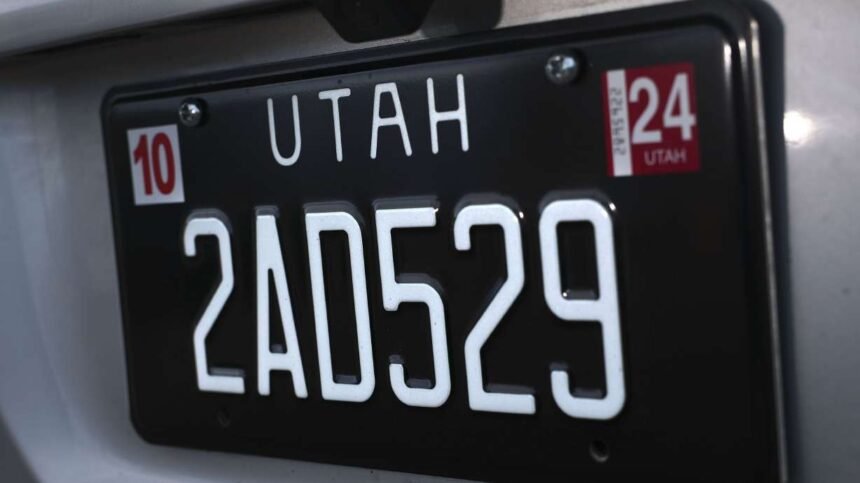SALT LAKE CITY — Utahns are spending millions on specialty license plates, which are funding everything from scholarships for veterans to wildlife conservation.
Jed Nilson never thought much about his license plate. But when he saw Utah’s black and white historic plate, it just felt right.
“I mean, I’ve got this gray and black vehicle, and so I just thought, ‘Oh, that will look really cool,'” Nilson said. “And then, of course, as soon as you do it, you see it everywhere else.”
He’s not wrong. The black and white retro-style plate has quickly become Utah’s most popular specialty plate since it was introduced a couple of years ago.
According to a newly released review by the Office of the Utah State Auditor, the Historic Utah plate has generated $4.5 million in revenue, making it the top earner among the state’s specialty plate options.
“Apparently, somebody is making a lot of money off of this deal,” Nilson said with a laugh.
Revenue from the plate goes directly to the Utah Historical Society and the Transportation Investment Fund, two of more than a dozen organizations that benefit from Utah’s specialty license plate program.
In total, the review found that Utah drivers contributed $15.7 million over a five-year period through various specialty plates.
All that money was tracked and audited to make sure it’s going to the intended causes.
“This is a legislative request to our office,” said Utah State Auditor Tina Cannon. “And that’s what we found with this report. Everyone is doing things exactly the way they’re supposed to be doing it, and the money is being used appropriately.”
Some of the top performers after the Historic Utah plate include the University of Utah plate at nearly $3 million, wildlife conservation plates at around $2 million, and the Utah State University and veterans plates, both earning about $1 million each.
According to the report:
Colleges and universities: $5.48 million
Private nonprofits: $2.52 million
State agencies: $7.74 million
And while the plates are optional, more and more Utahns seem to be choosing them.
“There are tons of vanity ones that have the little special sayings on them. I didn’t go that far,” said Nilson with a laugh.
The cost of a specialty plate varies, but many include a $25 annual fee on top of normal registration. That money is then passed on to the plate’s sponsoring organization, which is responsible for tracking how it’s spent. The state auditor’s office found that all organizations in the review were complying with the law and using the money as intended.
And as for Nilson?
“I don’t know why I did it,” he said with another laugh. “It just seemed like it matched my car better.”
To read the full report and audit, visit reporting.auditor.utah.gov/servlet/servlet.FileDownload?file=015Do0000017kZHIAY.
The Office of the Utah State Auditor created an animated visualization of the Top 10 plates and their associated revenues.
The Key Takeaways for this article were generated with the assistance of large language models and reviewed by our editorial team. The article, itself, is solely human-written.











